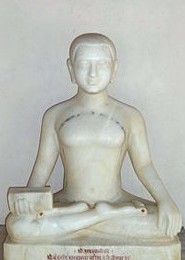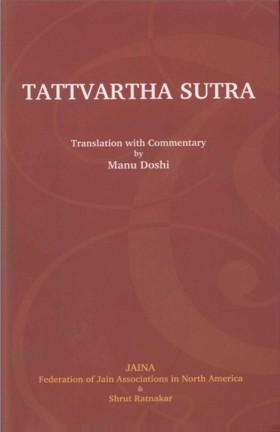05.25 Anavah Skandhāshcha
Audio: Sanskrit: अणव: स्कन्धाश्च ।
Hindi: पुद्गल - परमाणु और स्कन्धरूप हैं।
05.26 Sanghātbhedebhya Utpadyate
Audio: Sanskrit: सङ्घातभेदेभ्य उत्पद्यन्ते ।
Hindi: संघात से, भेद से और संघात-भेद दोनों से स्कन्ध उतपन्न होते है।
05.27 Bhedādanuh
Audio: Sanskrit: भेदादणु: ।
Hindi: अणु भेद से ही उतपन्न होता है।
05.28 Bhedsanghatabhyam Chākshushāh
Audio: Sanskrit: भेदसङ्घाताभ्यां चाक्षुषा: ।
Hindi: भेद और संघात से ही चाक्षुष स्कन्ध बनते है।
05.25-28
English: These sutras state how Paramānus and Skandhas are formed. Paramānu is usually taken as an atom. It is, however, the smallest indivisible part of a matter and is finer than a subatomic particle that can result from division of the existing Skandhas (clusters). They are formed either by combination of Paramānus or of existing clusters and also by division.
 Acharya Umaswati
Acharya Umaswati
